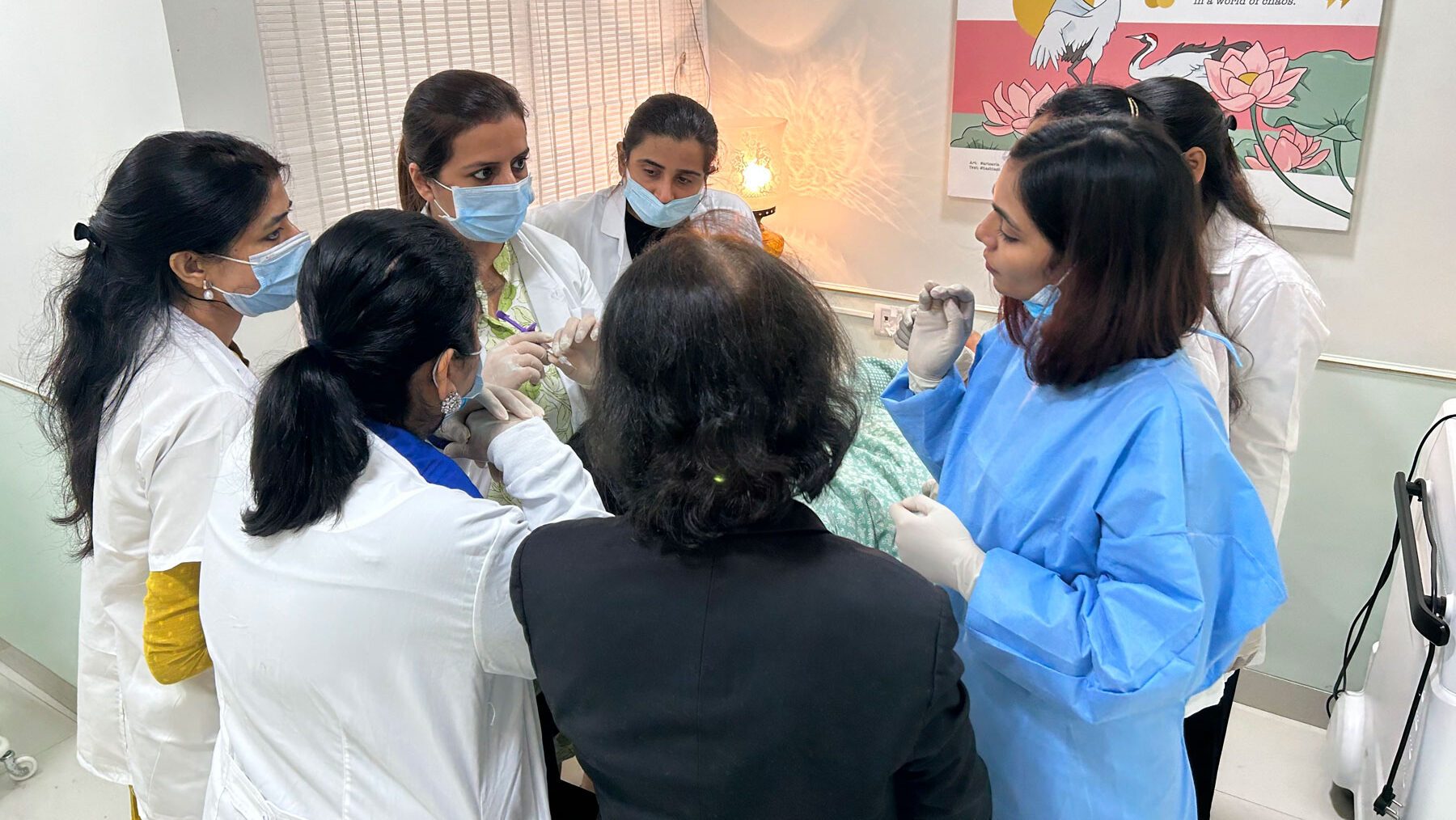Introduction:
The world of Aesthetic Dermatology is as vast and diverse as the people it serves. From hairstyling and makeup artistry to skincare and nail care, cosmetology offers a wide range of career opportunities. This comprehensive blog will provide you with all the information you need to make an informed decision before embarking on a career in cosmetology.
Section 1: Understanding Aesthetic Dermatology
– Define Aesthetic Dermatology and its significance in the beauty and wellness industry.
– Explore the different branches and specializations within Aesthetic Dermatology .
Section 2: Educational Requirements
– Discuss the importance of formal education and training in Aesthetic Dermatology .
– Describe the various educational pathways, including vocational schools, beauty colleges, and apprenticeships.
– Provide insights into the typical duration of Aesthetic Dermatology programs.
Section 3: Licensing and Certification
– Explain the necessity of obtaining a cosmetology license.
– Outline the steps to become a licensed aesthetic dermatologist, including written and practical exams.
– Discuss the renewal and continuing education requirements for Aesthetic Dermatology licenses.
Section 4: Career Opportunities
– Explore the wide array of career options in Aesthetic Dermatology like freelance and entrepreneurial opportunities.
– Highlight the potential for career advancement within the industry.
– Provide real-life success stories of aesthetic dermatologists who have made a mark in their fields.
Section 5: Personal Qualities and Skills
– Identify the essential qualities and skills that aesthetic dermatologists need to succeed, including creativity, attention to detail, and customer service.
– Offer tips on how to develop and enhance these qualities.
– Discuss the importance of adaptability and staying updated with industry trends.
Section 6: Financial Considerations
– Break down the costs associated with Aesthetic Dermatology education, including tuition, supplies, and licensure fees.
– Explore financial aid options, scholarships, and grants available to aspiring cosmetologists.
– Offer advice on managing finances during Aesthetic Dermatology school and early career stages.
Section 7: Job Market and Salary
– Provide insights into the current job market for aesthetic dermatologists, including job prospects and demand.
– Discuss the potential earnings and salary ranges in the field, taking into account location and experience.
– Highlight factors that can influence an aesthetic dermatologist’s income, such as specialization and clientele.
Section 8: Continuing Education and Specializations
– Discuss the importance of continuing education in Aesthetic Dermatology to stay competitive in the industry.
– Explore various specializations and advanced certifications available to aesthetic dermatologists.
– Provide information on how to choose the right specialization for your career goals.
Section 9: Ethical and Professional Considerations
– Emphasize the importance of professionalism and ethical conduct in cosmetology.
– Address issues like client confidentiality, hygiene, and maintaining a positive reputation.
– Offer guidance on handling difficult clients and building strong client relationships.
Conclusion:
A career in Aesthetic Dermatology can be an incredibly rewarding and creative journey. However, it’s essential to be well-informed before embarking on this path. This blog has equipped you with the knowledge to make a confident decision. Remember, success in Aesthetic Dermatology is not only about mastering techniques but also about building relationships and staying dedicated to continuous learning. The beauty and wellness industry awaits your talent and passion, and with the right information and determination, you can achieve great success in the field.


